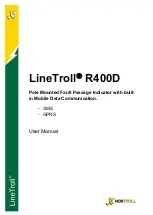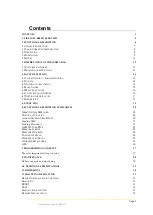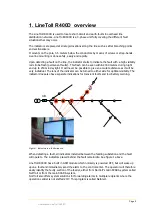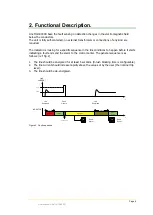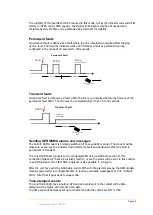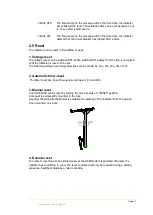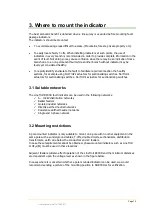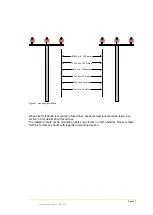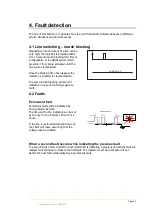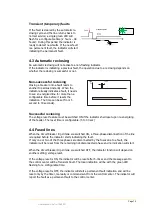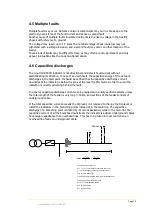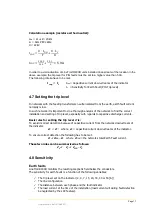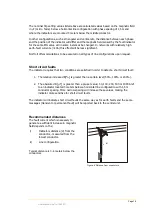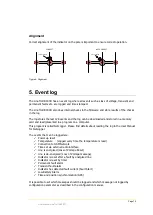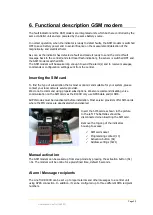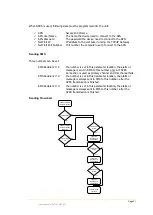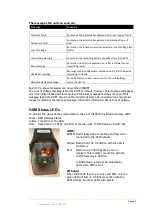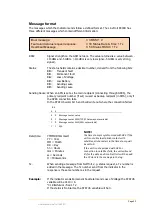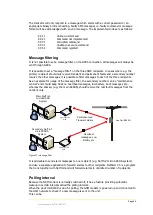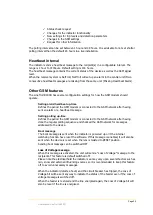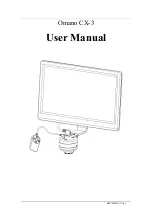
Page 10
User Manual LineTroll R400D
The visibility of the local flash will be reduced in this mode, but as the indicator will send all its
alarms on GPRS and/or SMS anyway, the bright strobe flash is maybe not needed and
therefore battery lift-time can be extended as a trade-off for visibility.
Permanent faults
A permanent fault is defined as a fault where the line remains de-energized after tripping
upon a fault. The time the indicator waits until it defines a fault as permanent can be
configured in the range of 40 seconds to 300 seconds.
Fast Auto
Reclosing
Last
Reclosing
Non-successful
Fault
40 to 300 sec
5 to 15 sec
SMS with ’Permanent
Fault’
Permanent Fault
Transient faults
A transient fault is defined as a fault where the line is re-energized before the timeout of the
permanent fault timer. The line must be energized longer than 15 to 30 seconds.
Fast Auto
Reclosing
Fault
15/30 sec
SMS with ’Transient
Fault’
Transient Fault
Sending GPRS/SMS alarms and messages
The built-in GSM modem is normally switched off to save battery power. The modem will be
waked up as soon as the indicator have detected a fault and decided whether the fault is
permanent or transient.
The LineTroll R400D connects to the configured APN using a GPRS connection. If this
connection fails and a “back
-
up recipient number” is set, the alarm will be sent to this number
in an SMS instead. Two other SMS recipients is also possible to configure.
After the unit have sent the GPRS data and/or SMS with the alarm message, the GSM modem
remains powered for a configurable time to receive eventually messages sent to it. (Default
2min). After that it goes back to sleep mode.
Time-stamped events
The LineTroll R400D have a built-in GPS and all events sent to the central will be time-
stamped with a highly accurate time and date.
The time sent will be dependent upon whether the CB-trip criteria are ON or OFF:

